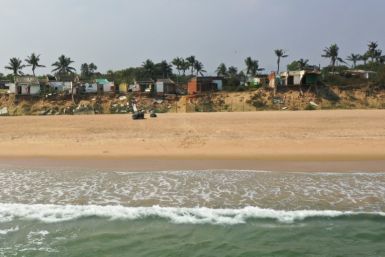Climate Change: Year 2013 Declared One of the Warmest, Australia's Emissions to Rise Under Abbott Policy
(Source:Youtube/CBSEveningNews)
The World Meteorological Organisation (WMO) has declared 2013 as among the top 10 warmest years on record since 1850. The rising sea levels due to climate change have aggravated the effect of strong cyclones like Typhoon Haiyan that left the Philippines overwhelmed and under a state of calamity.
According to WMO Secretary-General Michel Jarraud, the increasing levels of greenhouse gases in the atmosphere meant warmer temperatures in the future and more extreme weather. In climate change talks with almost 200 representatives from nations around the world, he said the first nine months of 2013 tied with the first nine months of 2003 with average global land and ocean surface temperature of over 48 degrees Celsius.
The disastrous aftermath of Super Typhoon Haiyan cast a shadow on the United Nations climate change talks that began on Nov 11 in Warsaw, Poland. Although the official death toll is at 2,375, Philippine authorities fear over 10,000 died from the destructive force of Typhoon Haiyan.
According to reports, some towns have not yet received relief despite foreign and local aid slowly being mobilised to reach survivors in Tacloban City.
According to French university professor and climatologist Herve Le Treut, oceans have a tendency to have high temperatures and cause developing cyclones to intensify. He said this is part of the risks as the climate changes.
Cyclones, hurricanes and typhoons are all the same and only differ in name based on the geographical location they hit. In general, meteorologists use the term "cyclone" in reference to super storms.
Aside from Typhoon Haiyan, other extreme weather disturbances include the record-breaking heat waves in Australia, leading climate scientists to suspect recent NSW bushfires were enhanced by climate change. The floods experienced in Sudan to Europe were also believed to be aggravated by climate change and rising global temperatures, according to the WMO.
The lead negotiator for an alliance of small island nations, Olai Ngedikes, said that Typhoon Haiyan should be a "stark reminder" of the lack of action among governments in the world. He said the typhoon should motivate climate change negotiators to push an agreement in Warsaw.
Australia emissions to rise under Abbott government
Meanwhile, an analysis of the Coalition government's direct action climate change policy in Australia suggests that the country will see a substantial increase in carbon emissions by 2020.
According to a Climate Action Tracker policy brief, the Australian Labour Party's emissions trading scheme would have enabled the country to reduce emissions by 5 per cent on 2000 levels. Based on current data, Prime Minister Tony Abbott's direct action policy will reportedly not meet the Kyoto target.
The policy brief states Mr Abbott's government's proposed direct action programme does not have the resources to meet the reduction goal of 5 per cent.
(Source:Youtube/CNN)






